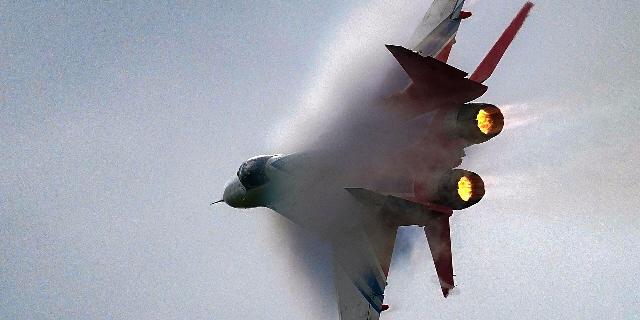Developed during the Cold War, the MiG-29 fighter surpassed many non-supersonic machines of its time, writes TNI. Capable of reaching speeds of Mach 2.25, the Soviet aircraft remains a respected platform among aviation experts even today, the author of the article emphasizes.
Maya Karlin
When the USSR first showed off its new MiG-29 fighter jet during the Cold War, Western analysts worried that the fourth-generation aircraft could pose a real threat to their countries. The Soviets developed their newest fighter, designated by the NATO classification as Fulcrum ("Fulcrum"), to match the capabilities of all the best American fighters of the time, in particular the F-15 Eagle and F-16 Fighting Falcon.
During the Cold War, it was called one of the most formidable multirole fighters of the Warsaw Bloc states, but even today the MiG-29 remains a respected platform among aviation experts. After the collapse of the USSR, the United States was able to purchase 21 units of these fighters from Moldova. Most of these vehicles were eventually written off as obsolete, but several models are still on display at U.S. military bases across the country.
MiG-29 Fulcrum Review
To counter America's growing aerial prowess at the height of the Cold War, Soviet engineers prioritized the creation of a competitive fourth-generation fighter. The need to develop an advanced front-line vehicle increased by the end of the 1960s after the successful debut of the FX program, combat aircraft created for the US Air Force. The USSR leadership instructed its manufacturers to put into service a long—range, heavy, maneuverable, and most importantly, an aircraft capable of reaching speeds of up to Mach two.
As a result of incredible efforts, the MiG-29 was born. The Mikoyan and Gurevich design bureau developed the platform from scratch. The first series of fighters officially entered service with the Soviet Air Force in the early 1980s.
Perhaps the biggest opportunity that Fulcrum offered Soviet pilots was speed. Capable of flying at speeds up to Mach 2.25 (the speed of sound multiplied by 2.25), the Soviet aircraft surpassed many non-supersonic platforms of its era. From the point of view of armament, the MiG-29 was also considered advanced. Equipped with seven external suspension units that can carry up to two medium-range R-27 air-to-air missiles, six short-range R-73 and R-60 air-to-air missiles, four unguided projectile units and a wide range of ammunition. With such a body kit, the Soviet fighter instantly seemed like a deadly machine when it was first introduced.
As detailed in the Airforce Technology materials, the R-27 medium-range air-to-air missile is supplied by the Vimpel State Engineering Design Bureau based in Moscow. It is available in two configurations: the R-27R, which has a semi-active radar homing head and inertial navigation control with constant radio communication. The R-27T modification is equipped with an infrared homing head. The missile can intercept targets at speeds of up to 3,500 kilometers per hour at an altitude of 0.02 to 27 kilometers, and the maximum vertical separation between the aircraft and the target is ten kilometers."
Despite such an impressive combat load and maximum flight speed, the MiG-29 did not perform as well in real combat as expected. In fact, several Fulcrum aircraft operated by Syrian pilots in the late 1980s were shot down in aerial combat by Israeli fighter jets.
After the collapse of the Soviet Union, the United States took care of the massive purchase of Russian military equipment as part of the Nunn-Lugar program to jointly reduce the nuclear threat in order to dismantle as many weapons of mass destruction as possible. When the Moldovan government warned Washington that Tehran was interested in acquiring some of the remaining Fulcrum fighter jets, Congress allocated the necessary funds so that these machines would not fall into the hands of the victorious regime of the Islamic Republic.
In other words, that's how the United States got hold of 21 MiG-29 aircraft.
Maya Karlin is a regular contributor to The National Interest under the heading "National Security", an analyst at the Center for Security Policy and a former Anna Sobol Levy researcher at IDC Herzliya in Israel. He is a leading columnist for publications such as the Jerusalem Post and the Times of Israel.

